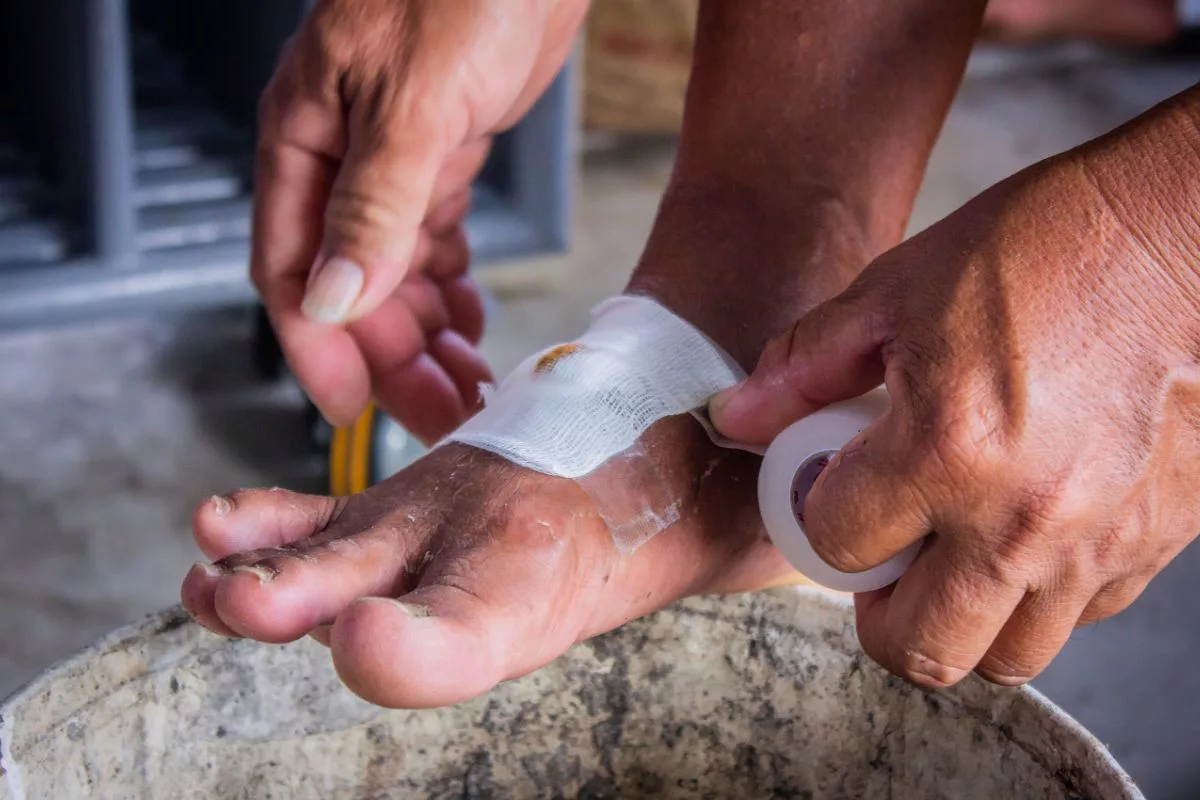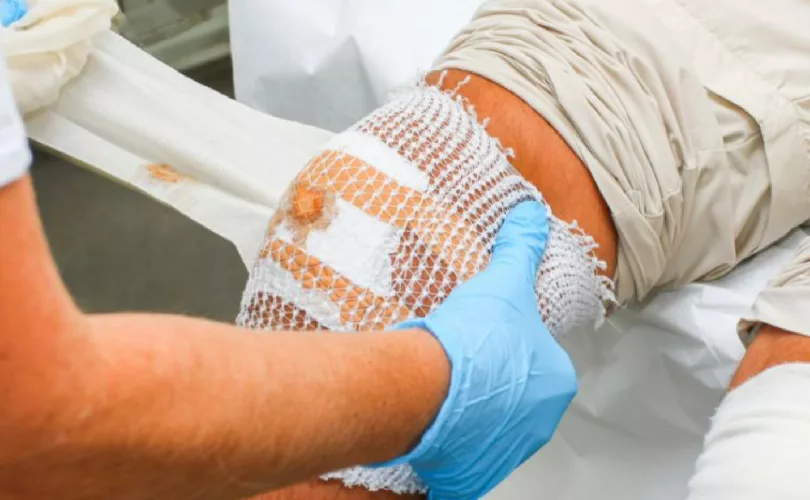To assess whether the drainage of a wound is healthy or a cause for concern, you need to understand the different types of wounds and the different types of wound drainage. Keep reading to find out more.
Different Types Of Wounds
Wounds can be categorized in lots of different ways. An important difference to consider when assessing wound drainage is whether the wound is acute or chronic.
What Is An Acute Wound?
An acute wound is a wound that is sustained suddenly. This could be an abrasion, a friction wound, a piercing wound, a burn – any sudden trauma that breaks the skin. An acute wound follows the normal and expected process of healing, leading to a full recovery (possibly with scarring).
What Is A Chronic Wound?
A chronic wound does not follow the normal and expected process of healing. This could be due to infection, or complications such as diabetes, cancer or vascular disease. An acute wound can progress into a chronic wound over time if it does heal properly.
Different Types Of Wound Drainage
Wound drainage is a normal part of the healing process, but there are some types of wound drainage that are a cause for concern.
What Is Wound Drainage?
Wound drainage is any type of liquid that is secreted from the wounded area. This can include blood, blood plasma, pus etc. The secreted liquid is called exudate, and there are different types of exudate.
It is made up of water, proteins, blood cells, electrolytes and other types of cells that all play a role in the healing of the wound. If the wound drainage is unhealthy, it will also contain dead cells, bacteria and necrotic tissue cells.
Serous Exudate
Serous exudate is a clear, watery liquid that leaks out if the wound is mildly inflamed. Once the inflammation settles, the serous exudate should stop. It is low in protein and has no red blood cells, hence the transparent appearance.
If serous exudate continues after the inflammatory stage of healing, this could be a sign that bacteria and germs are present on the surface of the wound. The wound will need to be cleaned thoroughly.
Sanguineous Exudate
Sanguineous exudate can be thin and watery like serous exudate, or it can be thicker with a texture like syrup. It can be pink or red in color, depending on how many red blood cells are present.
It is made up of blood and viscous serum and it usually comes from the capillaries, which are more permeable during the inflammatory stage of wound healing.
It is very normal to see sanguineous exudate coming from a fresh wound, especially if the wound is deeper than surface level and penetrates more than the first few layers of superficial skin.
The amount of sanguineous exudate should gradually decrease, and will lessen more rapidly after the inflammation has gone. If the exudate continues, this could be a sign that the wound is not healing or it has sustained further trauma.

Purulent Exudate
Purulent exudate is concerning. It is what most people refer to as ‘pus’, and it is a sign that the wound has become infected.
Purulent exudate is made up of white blood cells that are trying to fight the infection, inflammatory cells that are trying to signal the immune system, dying bacteria, necrotic tissue and other dead cells and debris.
It is usually white, yellow, creamy or green in color. It often has a foul odor due to the presence of bacteria and necrotic tissue. Purulent exudate is usually present alongside other signs of infection such as inflammation, redness, pain and warmth.
If a wound is infected and leaking purulent exudate then it needs immediate medical attention and carefully considered professional care.
Acute Wound Drainage
An acute wound will usually show serous and/or sanguineous drainage. If the wound is mild, it will secrete serous exudate, but if it is more severe then you will see sanguineous drainage. Sometimes the serous and sanguineous exudate will mix together, to form serosanguineous exudate.
When the wound is initially sustained, it will bleed and immediately begin to become inflamed. Before the wound can be treated, steps will need to be taken to stop the bleeding. This could involve pressure, elevation, or even surgery. The wound is then cleaned and dressed.
The wound will remain inflamed for up to 5 to 7 days depending on the severity of the injury. During this time, the wound drainage is likely to continue. The wound dressings should be changed regularly, and the wound will need to be kept clean.
Whilst the wound is inflamed, changing the dressings could put pressure on the capillaries and cause some further bleeding. This is nothing to be concerned about, but try to be as gentle as possible. If there is a lot of wound drainage you will need an absorbent dressing such as foam.
The ideal healing environment for an acute injury is moist, but free from bacteria and contaminants. If a wound is too dry, it will slow down the healing process. In this case, it is best to use dressings that increase the moisture in the wound area such as hydro gel or hydrocolloids.
Once the wound drainage eases, you can switch to a lighter dressing such as simple gauze or a bandage. This will protect the wound from further trauma as it finishes healing.
Chronic Wound Drainage
Chronic wounds tend to display purulent exudate, as the wounds aren’t healing correctly and tend to become infected. If the body is already suffering from a condition that impacts healing, such as cancer or diabetes, it is possible that a chronic wound will never resolve.
In this case, it needs to be managed to prevent deterioration. The exudate from chronic wounds should not be left in contact with the skin for long periods of time, as this could exacerbate the infection.
This means that the dressings need to be changed regularly and the wound needs to be kept clean. The high levels of drainage from a chronic wound can cause the wound area to become too moist.
This is detrimental to the healing process, as the skin surrounding the wound will become prone to breakage which can increase the size of the wound. This condition is called ‘vulnerable periwound’.
To prevent this from happening, you need to use a moisture-retaining dressing which will absorb the wound draining but not introduce new moisture to the area. You can also use moisture barrier ointments to prevent the skin from breaking down further.
Summary
Wound drainage is a normal part of the healing process, but certain types of wound drainage are a sign that something is wrong.
Purulent wound drainage indicates an infection, and this needs to be treated appropriately. Understanding whether a wound is acute or chronic will help you to manage the wound in the best way.



